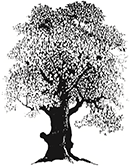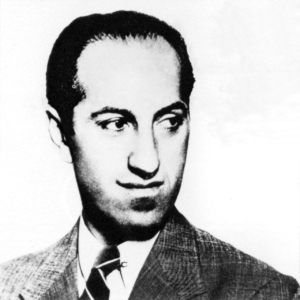REVIEW POTPOURRI: George Gershwin
 by Peter Cates
by Peter Cates
George Gershwin
Gershwin: Rhapsody in Blue and An American in Paris. Jesus Maria Sanroma, pianist in Rhapsody; William Steinberg conducting the Pittsburgh Symphony. Everest records, 12-inch LP, recorded late 1950s. Concerto in F. Oscar Levant, pianist; Andre Kostelanetz conducting the New York Philharmonic. Columbia Masterworks, 12-inch LP, recorded 1946. Barber: Violin Concerto – Louis Kaufman, violin; Walter Goehr conducting a studio orchestra. Copland: Piano Concerto – Leo Smit, pianist; Aaron Copland conducting the Radio Rome Symphony Orchestra. Musical Masterpiece Society MMS-105, ten-inch LP, recorded early 1950s.
The three 20th century American classical composers who appear most frequently on concert programs and recordings are George Gershwin (1898-1937), Aaron Copland (1900-1990) and Samuel Barber (1910-1981). Gershwin’s Rhapsody, since its 1924 world premiere at Carnegie Hall, the 1925 Concerto in F – my personal favorite of the three – and the 1927 An American in Paris are given performances by the above musicians that are among the better ones in a very crowded catalog.
William Steinberg (1899-1978) and the Pittsburgh players did a few recordings for the Everest label between their contracts with Capitol Records and the newly-formed Command label. And Steinberg was one of the giants among conductors of the last century whose interpretations of composers from Mozart to Richard Strauss had much power and beauty without being flashy or sensationalized, while pianist Sanroma had over 20 years of experience with the Rhapsody and a previous 1930s recording under Arthur Fiedler.
One detail, however, remains in my memory. Public television broadcast a Beethoven 7th Symphony concert by the Maestro in which he waved his hands like a totally intoxicated drunk. But that concert was a very good one.
The Gershwin Rhapsody and American in Paris had a more delicate, tender beauty than usual in Steinberg’s performances, as opposed to the more boisterous renditions of Leonard Bernstein with the New York Philharmonic and Fiedler/Boston Pops. Whereas the Concerto in F, as it was interpreted by Gershwin’s very good friends, Oscar Levant and Andre Kostelanetz with a fantastically responsive New York Philharmonic, had just the right jubilant swaggering rhythms in the first and third movements and atmospheric poetry in its second movement adagi , exquisitely evoking the Manhattan of the 1920s that was a very part of Gershwin’s own heart and soul.
Samuel Barber is perhaps best known for his Adagio for Strings, composed in the late ‘30s and used in the 1980s war film Platoon. His 1939 Violin Concerto is a genuine beauty with haunting melody. Violinist Louis Kaufman and Maestro Walter Goehr achieved a very good collaboration.
Kaufman’s records, before their 1990s CD reissues, were very pricey collector’s items.
Aaron Copland was perhaps most famous for his 1940s ballets Appalachian Spring, Billy the Kid and Rodeo, along with his Hollywood soundtracks for Our Town and The Red Pony. His use of folk melodies and hymns evoked the American landscape of New England village life, the Appalachian Mountains and the Old West.
During the 1920s, the composer was experimenting with jazz rhythms similar to Gershwin and the Piano Concerto is a highly colorful example. One musician commented that when Copland premiered an earlier piece, he’d be ready to commit murder in a few years.
A good friend pianist Leo Smit performed with unique conviction under Copland’s leadership of the Italian orchestra.
Walter Goehr
Maestro Walter Goehr (1903-1960) recorded prolifically for the Concert Hall label of the early 1950s and its subsidiary inexpensive mail order Musical Masterpiece Society. His LPs of Rimsky-Korsakov’s Scheherazade, Mendelssohn’s Scottish Symphony and Hebrides Overture, the Beethoven Pastoral and 9th Symphonies, the Grieg Piano Concerto with Grant Johannesen, the Schumann A minor and Chopin 1st Concertos with Mewton-Wood and Bach Violin Concertos with Riccardo Odnoposoff are of high merit.
During the 1930s and ‘40s, Goehr was one of EMI’s busiest house conductors in London and his work with instrumentalists and singers appeared on numerous 78s in the U.S.
In December 1960, after conducting Handel’s Messiah, Walter Goehr died suddenly of a heart attack at the age of 57.
Most all of the above selections are accessible on YouTube.
Responsible journalism is hard work!
It is also expensive!
If you enjoy reading The Town Line and the good news we bring you each week, would you consider a donation to help us continue the work we’re doing?
The Town Line is a 501(c)(3) nonprofit private foundation, and all donations are tax deductible under the Internal Revenue Service code.
To help, please visit our online donation page or mail a check payable to The Town Line, PO Box 89, South China, ME 04358. Your contribution is appreciated!



Leave a Reply
Want to join the discussion?Feel free to contribute!